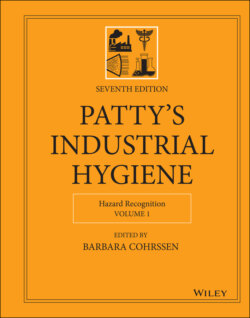Читать книгу Patty's Industrial Hygiene, Hazard Recognition - Группа авторов - Страница 121
5.1 Risk Level Based Management System
ОглавлениеEach of the EHS disciplines speaks a different professional language and any one of them can be quite foreign to workers, or completely incomprehensible if more than one tries to communicate control expectations for the same task. The multidisciplinary EORM model outline above is known as the risk level based management system (RLBMS), and it uses CB's effective approach to risk communication to translate EHS expectations and controls into the simplest terms (22, 32). The RLBMS also effectively standardizes its communication within and between EHS professions in the same worker‐friendly language. In addition, this strategy also helps maximize the effectiveness of the often minimalized EHS resources by prioritizing their direct involvement in the workplace to tasks where they are most needed, the highest risk activities at RL3 and RL4. The vast majority of tasks in industry are at the RL1 and RL2 levels, so EHS staff involvement when this work is performed is less necessary and the clear risk communication of expectations helps workers expand their workplace autonomy. Therefore, establishing the RLBMS assists in establishing the essential, but often illusive, bond of trust between workers and EHS professionals. The most essential focus of the multidisciplinary risk communication process is provided by clearly establishing the expectations when the expected scope of work for RL2 tasks may cross the line into RL3; the worker must contact their EHS staff. The reward of an EHS professional receiving a call like this not only provides a solid risk communication foundation provided by the RLBMS for their efforts with workers and their line management, it is reflective of a mutual understanding of professional responsibility and trust for all stakeholders. Achieving this level of communication also provides extraordinary benefits toward achieving a primary prevention of work‐related diseases, illnesses, and injuries over time as it is derived from proactive indicators rather than passive.
